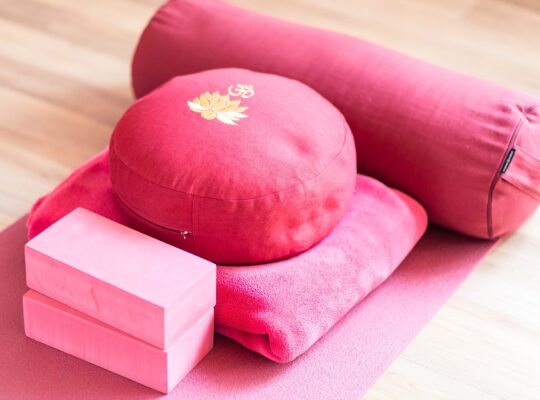Honestly, the hardest part of starting a personal yoga practice lies with being solely responsible for your own preparation, progress, and perspiration. Sure, there are tons of free and subscription-based yoga videos available on the Internet. Perhaps, your in-person studio – if you have one – likely offers online Zoom classes as well. Furthermore, you may be one of those who find comfort in and camaraderie through in-person classes. But as we all know, the likes of Corona have changed that – at least for the time being. Perhaps, that’s the very reason why you prefer to take up go it alone. But to do so, implementing a few surefire ways becomes a definite reality.
Long before you concern yourself with the “right props” or even in finding the “right live or on-demand online lesson/teacher,” you need to find the right physical space. Doing yoga at home means – for the most part – that you are the one in charge of keeping yourself motivated along with maintaining your focus and determination to produce desired results. Those most accustomed to the traditional yoga studio setup, need also to create emotional support strategies to help deal with the loneliness of doing yoga alone at home as opposed to being in an actual in-studio yoga, surrounded by your peers of different ages, cultures, and skill levels. We’ll focus on securing the right yoga props later, right now we need a place (within your current environment) to call your own.
You Need a “Sweet Spot”
Do you currently have an extra bedroom or an existing room/area that could be used/converted into an at-home yoga sanctuary? For the outdoorsy type, your sweet spot might lie in your backyard, a nearby park, or another wooded area perhaps with a stream. Who knows?!? Start with assessing your current environment for an area that you can repurpose into your own personal yoga sanctuary.
Securing a “sweet spot” on your own as your dedicated space greatly increases your chances of maintaining a consistent practice. In some cases, you may be forced to use an existing room where you must set up and breakdown for each practice. If this is the case, you will need an even greater desire to see this throu8gh as you might easily find yourself skipping days because of the added responsibility.
Unless you live alone or have houseguests over, active rooms such as the living or family room may not be the best option. In some cases, you may not have a spare room so you will need to use an existing room. Even if that’s the case, that room would still need to be assessed, and here are a few questions to ask yourself:
- Does this room/area provide any natural light?
- Is it in a quiet location or in a place where you won’t so easily be disturbed?
- Is there enough “breathing room” to lay down your mat (and other props)? to swing/extend your arms and/or legs in all directions?
- Are they any major distractions if even that could hamper your practice? Can you readily store or easily access everything you need for practicing in their room/area?
That means you’d need to provide yourself with extra time to lay your props, do your workout, and then pick everything back up again. Such a setup isn’t challenging but not impossible as you could find yourself becoming inconsistent in your practice as you may find yourself more prone to skip days because you don’t feel like setting up and breaking down all the time.
To learn more about how to set up your own at-home yoga oasis, check out Yoga Journal’s 5 Ways to DIY Your Own Yoga Sanctuary at Home. But in case you want a sneak peek, the five ways are (1) declutter, (2) choose calm colors, (3) set the mood with lighting, (4) accessorize with intention, and (5) hunt for treasures.





